#mi locations
Photo







Mission: Impossible – Rogue Nation + locations
#mission impossible#missionedit#mission impossible rogue nation#filmedit#movieedit#cinemapix#mi locations#mi5#mi#*mine#*my graphics#this is the set i wanted to make when i started these#mi5 <3 locations <3 <3#gah this movie is just so good#these establishing shots are so pretty
180 notes
·
View notes
Text
London: Mission: Impossible locations
8 notes
·
View notes
Text

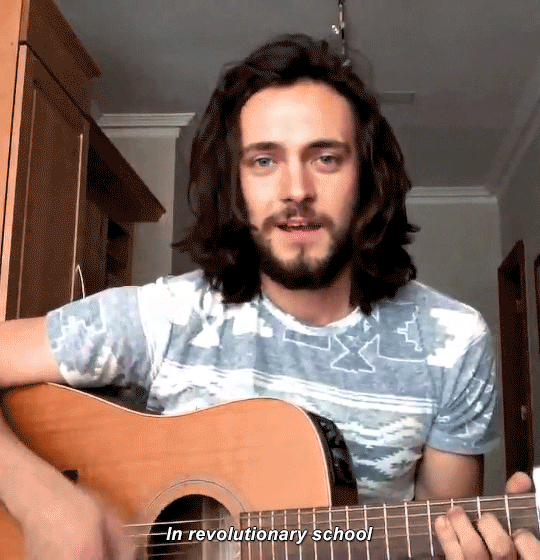
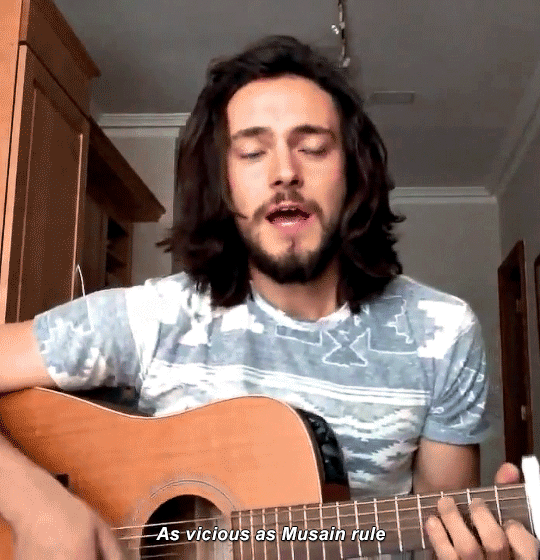






? 10TH ANNIVERSARY
So if heaven and hell decide that they both are satisfied
Illuminate the ‘no’s on their vacancy signs
If there's no one beside you when your soul embarks
I will follow you into the dark
#george blagden#les mis#lesmisedit#les miserables#enjoltaire#minee#?#i will follow you into the dark#enjolras#grantaire#musicaledit#userabs#usershale#tuserheidi#userhannah#remember that other time he went to the real-life location of the barricade and recorded himself singing 'drink with me'#what a gift he has been to us#so have this grainy gifset on this anniversary
346 notes
·
View notes
Text
I hope tumblr doesn’t die because No other social media site is as good for long, thoughtful, nuanced analyses of media. Yeah tumblr is also full of dumb shallow hot takes and shitposts, but you can make dumb shallow hot takes and shitposts anywhere —-there are no other popular social media sites that let you easily format and share long essays on the media you enjoy, and then have conversations around those long essays.
Fandom on all the other big social websites just seems so utterly …shallow. And it’s not because people on other websites aren’t thoughtful or don’t have deep things to say, but because these sites’ formats do not allow for any kind of long nuanced conversations.
Tiktok? Things have to be crammed into a super short video with an attention grabbing headline, and you can’t hyperlink sources. Instagram? Everything has to be in an image format with strict limits on length, and nothing will be shown to your followers anyway because of how Instagram’s algorithm works, and also no hyperlinks. Twitter? Strict character limits, and if you split it into threads it means someone can retweet a part of your essay completely out of context, and also very little freedom with formatting.
It frustrates me so much. If I go into the Tumblr Les Mis fandom I’ll find really compelling long essays on the original novel (including essays being written for the ongoing book club) on the story’s historical context, or the parallels between different characters and their narrative foils, or the way the politics were defanged for certain adaptations, or the way Victor Hugo’s personal life and failings affected the novel. But on tiktok I’ll get the same five shallow stale jokes from 2013 over and over, or maybe the same “DID U KNO THAT IN THE MUSICAL JAVERT AND VALJEAN SING THE SAME LEITMOTIF” style of basic Intro To Les Mis 101 For Babies media analysis (which is what Tiktok considers deep media analysis), or stale “LOL JAVERT ACTS GAY” style jokes as if we’re living in the early 2000s and calling a character gay is still a funny punchline. And it’s impossible to have any kind of deeper thoughtful discussions than “DID U KNOW <x Kool Fact>” or “lol <shallow observational joke>” on tiktok because the platform just isn’t built for building niche communities around in depth conversations. it’s built to churn out bland generic content for as wide an audience as possible, which means pointing out a small detail like an Easter egg and calling it “cool” is deep media analysis, because you cant have longer more in depth conversations without alienating people. And I hate it. Bc like, it’s not because there aren’t smart clever thoughtful people on Tiktok— there are—it’s because Tiktok isn’t built for these conversations, and anyone who wants to have them has to really fight against the things the website encourages or prioritizes!
Or like, if I go into the LOTR fandom on Tumblr, I’ll find tons of extremely long analysis and fanfic, and analysis of queer readings of the story. On Instagram people will still shriek in terror if you suggest the characters are gay, and most of the popular lotr posts are stale memes recycled from like 2007. There’s really no room for thoughtful media analysis, and even if you did create it, instagram’s algorithm would make sure no one saw your post anyway.
And everyone’s going to say “the algorithm shows you what you’ve seen before so maybe it’s your fault ~” or whatever but i do look for things I want! I do! “The algorithm” doesn’t know me or what I want or value or care about beyond this meaningless surface level.
The only thing that was worthwhile about these sites was the great visual art people were creating, but now the websites are overwhelmed with meaningless soulless machine-generated AI glurge, and it sucks. It just really, really sucks.
I’m honestly confused about why people don’t use tumblr….There’s no character limits! You have freedom with post formatting, and can insert images throughout textposts to illustrate specific points you’re making beneath the paragraphs where they’re necessary! You can add hyperlinks, linking to your sources! People can reblog your entire essay and share it, and then add on with commentary that then becomes part of a larger conversation! People can find your stuff through the tagging system! Reblogging means posts stay in circulation for years instead of being dead 30 minutes after they’re uploaded! If you want to have genuinely interesting text conversations about a piece of media, there really isn’t a better social media website for it anywhere.
To be clear, I’m definitely not saying Tumblr media analysis is *always* clever and thoughtful or etc etc. there are shitposts and nonsense here too (plenty of which I’ve created lol.) I’m saying that Tumblr gives people the tools for in-depth insightful analysis to happen. Whether people choose to do it or not is their own decision XD. But the reason lengthy in-depth conversations and book clubs are even possible here is because Tumblr is built for allowing these conversations to happen, in a way other sites simply aren’t.
It’d really suck if it died, because it’d be a huge blow to…being able to easily find long insightful in-depth media analysis written by fans. I currently don’t think there’s anything that could replace it.
#tumblr#I’m currently working an overlong essay post#comparing the locations Hugo references in Les Mis#with the photographs taken by Charles Marville in the 1860s of those very places#and just thinking “wow this would be hard on other sites
211 notes
·
View notes
Text



when you want to sell stickers of the old men in your school bazaar but know that likely literally no one other than you knows who these old men are
#jean valjean#javert#les mis#les miserables#they are real and i will be selling them tomorrow#i’m pretty sure a good chunk of old man fandom doesn’t live in my location (aka somewhere on southeast asia)#but i thought some people might like to look
152 notes
·
View notes
Text

just wanted to let you guys know that i took a walk through paris today finding les mis locations and one of the street signs for courfeyrac’s apartment had a random smurf next to it, which like. apt.
229 notes
·
View notes
Text
blows my mind reading fanfic in the les mis fandom of all places - les amis fanfic too - and seeing that overall there's more neutral-positive attitude towards cops than there ever is towards sex workers.
fucking. cops.
like i know u guys hate us (sex workers) that's very apparent, i know, but really? the fics about the little guys trying to change the world fighting against the system in place and were fully killed by the national guard will have bangers like "the police are just doing their job". fr?
and those same fics will have enjolras campaigning for sex workers to not be able to safely do their jobs. ok.
anyway writers who have enjolras as a staunch sex worker ally who listens to actual sex worker community organisers and supports them in fighting for full decriminalisation i am holding you tenderly in my hands and kissing you top of head.
writers who understand the gravity of what they're writing about re: police and understand the very simple fact that ACAB and have some real direct action fuck the state anarchist/domestic terrorist enjolras & abc, i'm shielding you from everything bad in this world and blessing ur first born.
and swerf bootlickers i hope you run face first into a hammer <3
#bothers me bc again none of this is in a vacuum#bet the people writing these fics are the people we're battling against when trying for full decriminalisation#did you know i live in one of the ... i think it's three total locations in the entire world where sex work is even partially decriminalised#and that's not the whole country#just the state#like it's a long fucking road ahead and public opinion is the number one challange and this is a way it manifests#anyway yeah yeah hooker rage i know no one cares but listen: acab#hooker posting#sex work in les mis#tagging it that just bc .. u know... wider fanfom
21 notes
·
View notes
Text
Les Misérables (Locations)
From The French Collection "Idéal-Bibliothèque" by "Hachette" Illustrated by Jacques Pecnard (1956 - 1963)

"Digne"

"Bishop Myriel House"

"Montreuil-sur-Mer"

"Montfermeil"

"Thénardier Inn"

"Christmas Booths"

"The Woods"
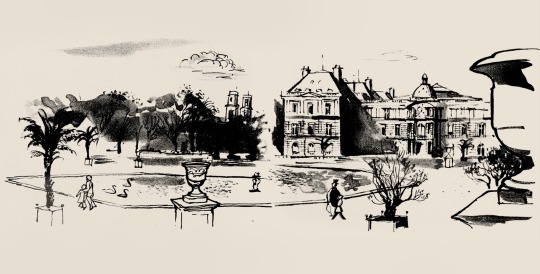

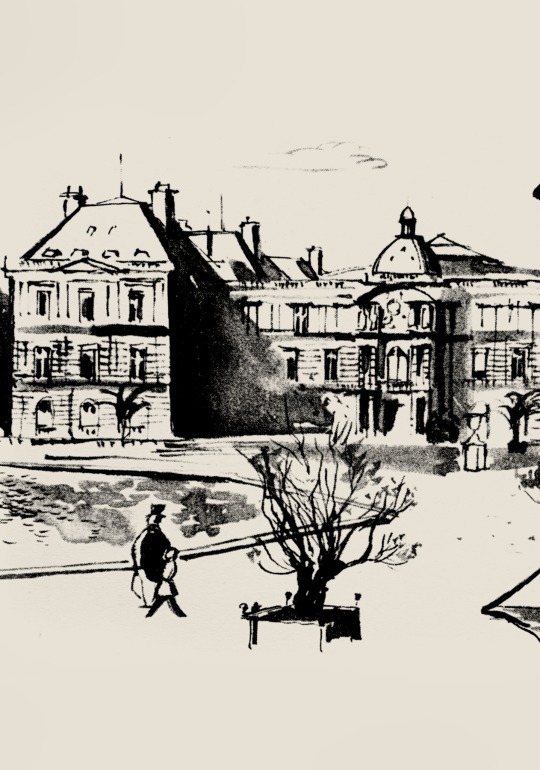
"The Luxembourg Garden"
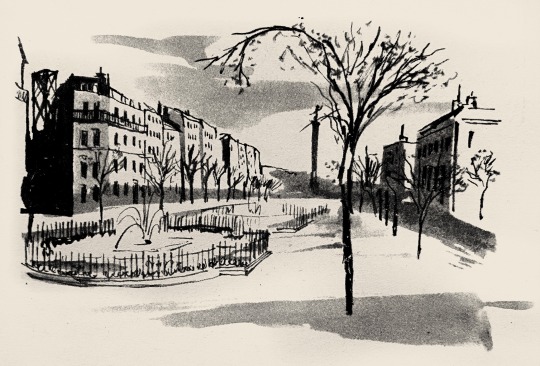
"The Place De La Bastille"

"Rue de la Chanvrerie"
96 notes
·
View notes
Text
Patron-Minette’s Paris
I thought I would compile a handy reference sheet of all the locations we see the Patron-Minette and their affiliates (both formal and informal) at different points of the novel. The 1832 map that I used can be found at this website— the site was really accessible and has a handy tool that lets you compare this old map directly to a modern-day map of Paris by overlaying.
Anyway, without further ado, here is the map featuring all geographic information relating to the Patron-Minette. Please expand this post to see the corresponding list of location names and find out what happens at each location. At the end of this post, you can also find a “short note” where I dissect and speculate some of the movements during the sections of the novel that centre around La Force specifically.
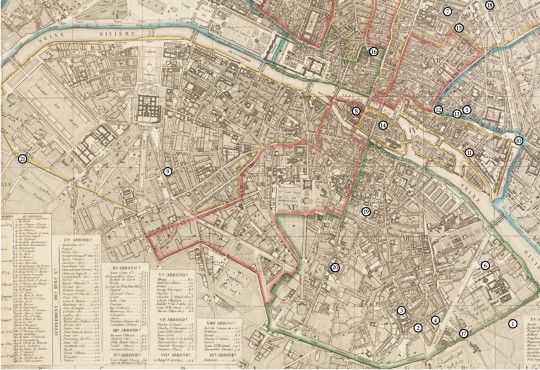
Click for higher quality and ability to zoom in on each numbered point. Sorry that I can’t make the image any clearer!
MEETING POINT
1. The ‘wasteland’ that adjoins La Salpêtrière; The location where the Patron-Minette assemble at nightfall and plan their heists.
•
GORBEAU AMBUSH
2. Gorbeau Hovel [estimated location]; Within this building exists the Thénardier (Jondrette) family lodgings— the location where the Gorbeau ambush takes place.
3. Rue de la Barrière des Gobelins; Here Marius spots Thénardier talking to Panchaud ahead of the Gorbeau ambush on the evening on February 3rd 1832.
4. Rue de Petit-Banquier; Behind a very low wall in the middle of this street Marius spots Brujon and Demi-Liard discussing the Gorbeau ambush, just five hours before it goes ahead.
•
PRISONS
5. La Force; The jail where Babet, Gueulemer, Brujon, Panchaud, Demi-Liard, Boulatruelle, and Thénardier are imprisoned after the failed Gorbeau ambush.
6. La Salpêtrière; A prison and ‘hospital’ where Babet’s mistress is locked up during the Spring of 1832. The location housed both “insane”, “hysterical” women and prostitutes behind its walls.
7. Les Madelonnettes; Formerly a convent, this facility was turned into a prison during the French Revolution. In 1832, Azelma and Éponine Thénardier are locked up here after the failed Gorbeau ambush.
8. La Conciergerie; A courthouse with an adjoining jail. In early April 1832, Babet was transported to this facility from La Force, but he managed to escape from the police en route.
•
RUE PLUMET
9. Rue Plumet [estimated location]; Located in the old Faubourg Saint-Germain district, this is the site where Valjean and Cosette live. It is here that Éponine faces off against the Patron-Minette on 3rd June 1832.
•
INFORMAL AFFILIATES: GAVROCHE, THE MÔMES, AND MAGNON
10. The Bastille Elephant; Gavroche’s ‘house’.
11. Quai des Célestins; The street where Magnon used to live.
12. Rue Clocheperce; After obtaining the two youngest Thénardier boys, Magnon moved to this street as a means of changing her identity. The comedic closeness of Magnon’s two lodgings is certainly not lost on Hugo and he explains as such: ‘In Paris, the identity which binds an individual to himself is broken between one street and another’ (Hapgood translation)
13. Rue des Ballets; On this street corner Gavroche and the mômes encounter Montparnasse the evening before the Patron-Minette’s escape from La Force.
•
CHARACTER SPECIFIC HAUNTS
14. Arche-Marion sewer [estimated location]; Gueulemer‘s hideout.
15. Square du Temple; According to Thénardier, Babet, amongst his other trades, had been an old-clothes broker at the Temple.
16. Barricade between Rue de la Chanvrerie and Rue Mondétour; The location where Le Cabuc/Claquesous shoots a porter and is executed by Enjolras. After being killed, his body is flung over the small barricade on Rue Mondétour.
17. Austerlitz village; It is in this general location where Gavroche witnesses Montparnasse’s attempt to attack Valjean in early April.
18. Gaîté theatre; Brujon and Demi-Liard watch a melodrama at this location on 2nd February 1832, the evening before the Gorbeau ambush.
19. Panthèon; Kruideniers is said to patrol and live in this general area.
20. Val-de-Grâce; Glorieux is said to patrol and live in this general area.
21. Barrière de Grenelle; Barrecarrosse is said to patrol and live in this general area.
•
A short note: Mapping La Force
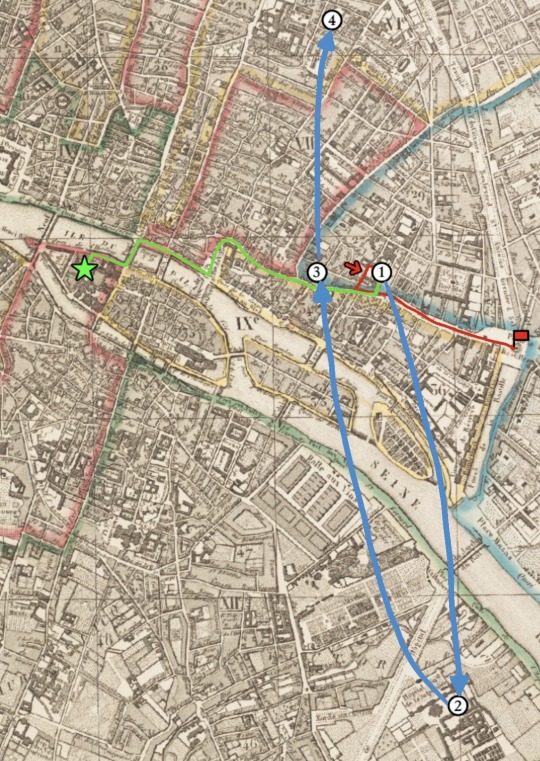
THE ILLOGICAL TRANSFER OF BRUJON’S CORRESPONDENCE ABOUT “RUE P” (blue)
1. La Force prison (Brujon gives note to Babet).
2. La Salpêtriere (Note is delivered to Babet’s mistress).
3. Rue Clocheperce (Note is delivered to Magnon).
4. Les Madelonnettes (Note is given to Éponine by Magnon once she is released).
Frankly, the way that Brujon’s secret correspondence about the Rue Plumet job is handed around before being delivered to Éponine is hilarious. Why did Babet bother to send the note all the way to his mistress in La Selpêtriere when Magnon near enough lives on the doorstep of La Force? Surely there could have been a much easier and more logical way for the note to be delivered to Magnon directly, rather than it crossing over the Seine and going to another prison before being smuggled back out to Magnon again.
And, let’s not forget that the same thing happens in reverse after Éponine has scouted out the house on rue Plumet and delivered a biscuit to Magnon. The whole process seems extremely long-winded and perhaps even riskier than Babet and Brujon trying to get the message delivered to Magnon directly!
•
MONTPARNASSE’S INSANE RUNNING SPEED (red)
Red arrow to red flag: the route taken by Montparnasse to fetch Gavroche and bring him to La Force in order to help Thénardier down from the roof.
Well, by tracking the length of time it takes to complete this route, I have come to the conclusion that Montparnasse has very long legs and is an insanely fast runner.
According to Google Maps taking the quickest route from La Force to the location of the Bastille elephant one way would take over ten minutes to walk. Which sure, maybe that could be run in five minutes if you set a good pace. But, Hugo states that in ‘seven to eight minutes’ Montparnasse had run the complete route twice over (as he had to bring Gavroche back with him to La Force) wearing what I can only image would be rather heavy and uncomfortable garments, considering that his clothes would be soaked with rain at this point of the scene. And, we must account for the time that Montparnasse had to stand outside the Bastille Elephant and call for Gavroche + wait for him to come down and follow him.
It seems like a fairly impressive feat to me that he was able to do all that in seven to eight minutes— I guess he wasn’t referred to as Thénardier’s almost son-in-law in vain then, he certainly seems keen to get the innkeeper down from the roof!
•
HOW DID BABET ESCAPE? (green)
Green star: La Conciergerie, where Babet was being transferred from La Force when he made his escape. The green line is a rough indication of the route he might have been transported along.
Looking at all of the possible routes that Babet could have been transported along whilst being taken from La Force to La Conciergerie has me intrigued. Of course, I can only speculate about which point he might have escaped (if he even escaped en route? Montparnasse is rather vague when telling Gavroche how Babet escaped... but he does mention a police station— so perhaps Babet had fled before his transportation to La Conciergerie had even begun).
I think it is interesting to note that Magnon’s house is located fairly near La Force and La Conciergerie. And, we know that Magnon is at least acquaintances with Babet’s mistress thanks to the route of delivery of Brujon’s “Rue P” note... so perhaps she granted him a place to hide from the police.
Gueulemer’s hideout in the Arche-Marion sewer is also located very close to La Conciergerie. Again, this would have provided a nice hiding spot for Babet after he made his escape— and we know that Victor Hugo loves a good sewer story.
#les miserables#les mis#les mis maps#patron minette#les mis locations#patron-minette#the brick#meta#once again a very niche post I hope you find it interesting though#sidenote I think as a fandom we should talk more about Gueulemer's hideout being in a sewer
62 notes
·
View notes
Photo








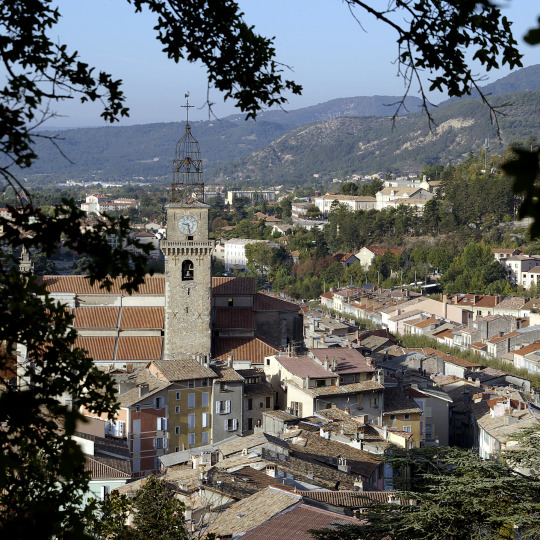
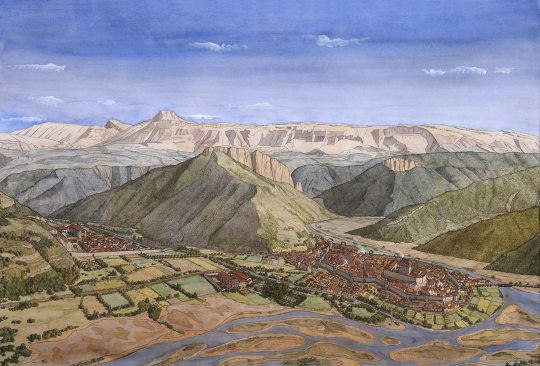
Digne in the era of Les Misérables
An engraved print of a scenic view of the city of Digne-les-Bains from a traveller's guide published in 1838
A coloured military map of Digne with the buildings marked from between 1820 and 1866
The old episcopal palace of Digne, a postcard from 1898 to 1900
An old photo of the old Place de l'Évêché
An early 20th century map of Digne, showing a lot more detail but way too new for our purposes, dated 1921
An old photograph of Digne
An old photograph of a sloping street with archways through buildings
A screenshot from Les Misérables 1925 showing another narrow sloping street surrounded by small houses
A view of the Cathedral St. Jérôme with its strange wire dome, photograph from 2007 by Denis Champollion
Digne in the late 14th / early 15th century, an artist's impression by Jean-Claude Golvin
Digne-les-Bains (or Dinha dei Banhs in the local Occitan language) is a small city in Province, in southeastern France. Centered on top of a hill, it’s surrounded by mountains on all sides and the river Bléone (Blèuna) flows past it (or nowadays rather through it as the city has spread on the other side of the river).
The 1925 movie adaptation of Les Misérables actually filmed the Digne scenes on location in Digne which is a great opportunity to see some authentic views of the city! (The movie is available in the Internet Archive.)

More under the cut:
Unfortunately I wasn’t able to find contemporary maps of Digne, except for this one from a Carte générale de la France (Cassini de Thury) that is luckily from exactly the right year (1815) but doesn’t really help much because it doesn’t really show much detail of the city and it’s also very difficult to read:
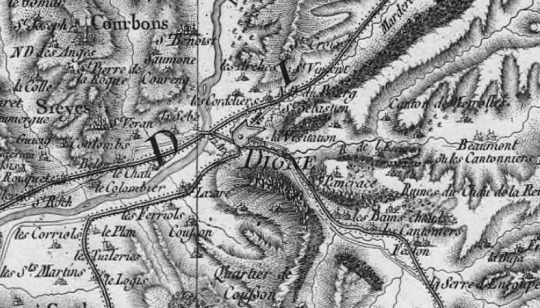
The Carte de l’état-major 1820-1866 is much more vague in terms of date, but I find it more useful:

I would be willing to guess that it’s probably still fairly close to Digne in 1815. Aside from the lack of walls, which I don’t think you can see on this map, but definitely would have been there in 1815. Hugo even mentions the walls:
He retraced his steps; the gates of Digne were closed. Digne, which had sustained sieges during the wars of religion, was still surrounded in 1815 by ancient walls flanked by square towers which have been demolished since.
I was also able to find a map from 1921, which is over a century later, but it’s the oldest proper map of the city I could track down: (Here zoomed in to focus on the old city)
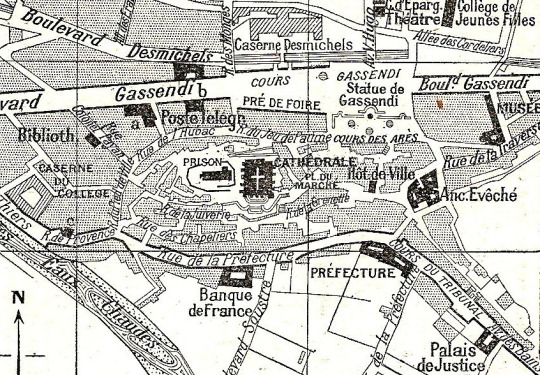
From something too recent to something much too old: an artist’s impression of medieval Digne, which actually shows the city walls:

There would have been more roads and streets and buildings outside of the walls in 1815, including the Boulevard Gassendi, which Hugo also mentions, as well as a bridge over the Bléone, but honestly it seems like the city actually hadn’t grown that much over the centuries.
It would grow over the course of the 19th century, though.
I’ll talk a little bit more later about the cathedral, the episcopal palace, etc. This post is getting too long!
Image Sources:
Digne-les-Bains official website (Jean-Claude Golvin)
Wikipedia / Wikimedia Commons (photographs by Denis Champollion, Szeder László)
Carte générale de la France (Cassini de Thury) from BNF Gallica
Guide pittoresque du voyageur en France (Eusèbe Girault de Saint-Fargeau) from BNF Gallica
Carte de l’état-major 1820-1866 from Géoportail (Institut national de l’information géographique et forestière)
Carte de la Provence (1921) : Digne (Les Guides bleus, Hachette, édition 1922)
Présentation de Digne-les-Bains from France Geo
dignois . fr / Digne-vieux
Les Misérables (1925)
106 notes
·
View notes
Text


Im replaying danganronpa (I am a loser) because the internet wasn’t working today and I’m remembering how much kyoko is a plot hole. I haven’t gotten too far but I don’t think this was ever explained? Nor does the headmaster being her dad explain this so did she just have this on her when she was being brainwashed?
Sometimes I think “oh kirigiri is so mysterious lol” but no. kyoko doesn’t plan it she’s just Like That
#kyoko. mi amor. my beloved. where the fuck did that paper come from?? girl really just pulled it out of her ass huh#she just has a fucking floor plan with her at all times ‘i need it to locate my father’ no the fuck you don’t just look for the office like#a regular person#spoilers#danganronpa#danganronpa trigger happy havoc
7 notes
·
View notes
Photo
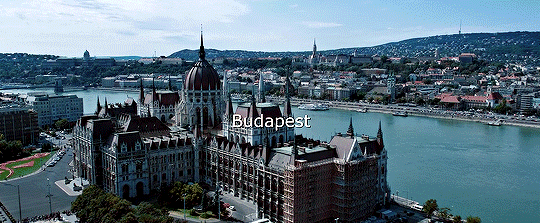




Mission: Impossible – Ghost Protocol + locations
#mission impossible#missionedit#mission impossible ghost protocol#mi4#filmedit#movieedit#mi locations#this gifset has been fighting me and i'm tired of trying to fix it#so here#i might make a better copy when i have the spoons#*mine#*my graphics#mi
78 notes
·
View notes
Text
le cose più sexy di santocielo sono:
i giganteschi e bellissimi alberi tra cui passa Nicola andando a scuola
Giovanni
il titolo con quel carattere bellissimo <3<3<3
il design del paradiso
i vecchietti del paese
#don't @ me#gli alberi sono stupendi#ma si sa che in Sicilia hanno bellezze naturali tra cui alberi centenari e Fiorello#;___;#patria blessed#viva la Sicilia#cmq location italiane sempre >>>>>>>>>>>>#moss text#santocielo#scusate a chi guarda la tag per good omens#io devo taggare per il mio blog#feel free to block#perchè mi sa che con Giova andrà avanti un pochino XD
5 notes
·
View notes
Text
Just got back from watching a production of Les Mis and yeah man to love another person really is to see the face of God 😭😭😭
#my favourite musical. last time i saw it was in..... 2015? around there#i have... some criticisms for this production but it made me cry a lot and left me dehydrated so it's still a win!#les mis#ramblings of a bystander#ok but seriously who decided to cast what looked like two south east asian sisters as child cosette and child eponine#and then adult eponine was also south east asian but cosette was NOT and was a full white woman#bizarre choice. we have so many characters to keep track of you should not be confusing my ability to follow them#a bit TOO many extras and too much activity on stage during sort of ensemble scenes#that made it a bit difficult to locate who was actually speaking/singing a couple times#javert was just a touch too stiff in his body language. actually a few missed body language opportunities#that would have helped clarify what was happening I'm just lucky to really know it all already#REALLY didn't like fantine's characterisation and delivery on a few lines but otherwise she was fine#also i can't believe enjolras first appeared on stage NOT wearing red and then had a costume change for the les amis cafe meetup#just put him in red straight away? why did grantaire also have a costume change to completely different color scheme at one point.#...it WAS a good production I'm just nitpicking. because it's my fave so i have OPINIONS#jean valjean was fantastic!#anyway. I'm gonna make myself some dinner now. and then see what I've missed
7 notes
·
View notes
Text
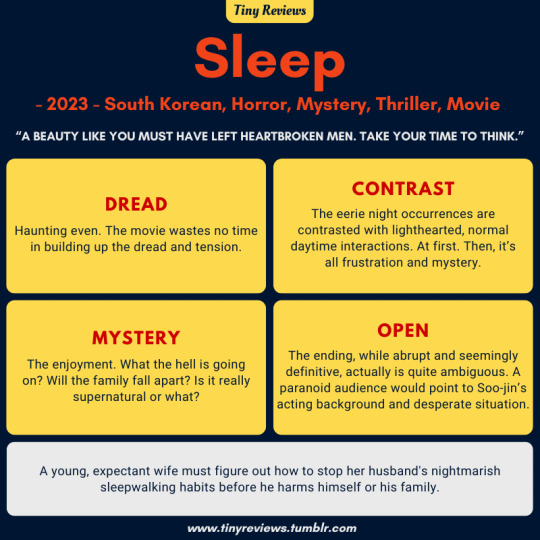
The ending took a dark, horrible turn. But I had been waiting for a Sixth Sense-esque twist the whole time...
Also, given the tight cast and setting, this could have been easily made into a one-location story.
Sleep (Korean: 잠; RR: jam) is a 2023 South Korean black comedy horror mystery thriller film written and directed by Jason Yu, in his feature debut. The film stars Jung Yu-mi and Lee Sun-kyun.
#2023 sleep#sleep 2023#sleep movie#jason yu#jung yu mi#lee sun kyun#korean movie#black comedy#horror movies#mystery movies#thriller movies#one location#movie review#2023
3 notes
·
View notes
Text
889 pages after the waterloo digression and he gives you this look:
Qu'on nous permette de recourir, pour la clarté du récit, au moyen simple déjà employé par nous pour Waterloo. (t. II, IV, 12, I, p. 438)
uh-oh. don't do it vicky! we just had 26 pages on the historical day 5 june 1832, we don't need another waterloo (70-page play-by-play commentary on a historical event in which our characters barely feature) on top of that!
Les personnes qui voudront se représenter d'une manière assez exacte les pâtés de maisons qui se dressaient à cette époque près la pointe Saint-Eustache, à l'angle nord-est des halles de Paris, où est aujourd'hui l'embouchure de la rue Rambuteau, n'ont qu'à se figurer, touchant la rue Saint-Denis par le sommet et par la base les halles, une N dont les deux jambages verticaux seraient la rue de la Grande-Truanderie et la rue de la Chanvrerie et dont la rue de la Petite-Truanderie ferait le jambage transversal. (ibid., pp. 438-439)
oh, so it was just a reference to his method of describing the relative locations of a bunch of streets by comparing them to a capital letter of the alphabet.
saying this, she casually threw a large cobblestone at la garde municipale.
#actually the last time he did this was when he was describing the streets around the convent. which was after waterloo#he loves using this device which is great for me because it actually helps!!! usually when i read written descriptions of relative#locations in space it does nothing for me. but apparently taking a bird's-eye view and tracing a giant letter over the top is#the secret sauce#the battlefield of waterloo was an A and the streets around the convent were a Y and now the streets around this barricade are an N#interesting that this time it's an N since usually in this book when he talks about the letter N he's talking about napoleon#maybe that's why he's specifically referencing his description of waterloo rather than his description of petit-picpus#les mis#lm 4.12.1#my posts#f#unfortunately while i do think i understand the location of these three streets and possibly how they relate to la rue Saint-Denis#i don't really understand where les halles are in all of this. and then he brings la rue du Cygne and la rue des Prêcheurs into it#and i'm like stop stop that's too many streets!!!#like i thought saint-denis was at the top of the N running perpendicular and les halles were doing the same thing at the bottom?#but then sometimes it sounds like les halles are on la rue saint-denis?#no wait i just reread that part and i think he's saying if you leave la rue saint-denis via la rue de la Chanvrerie eventually you will get#to les halles. so yeah they're on opposite sides of the N. still don't know what's up with la rue du cygne and la rue des prêcheurs though
5 notes
·
View notes